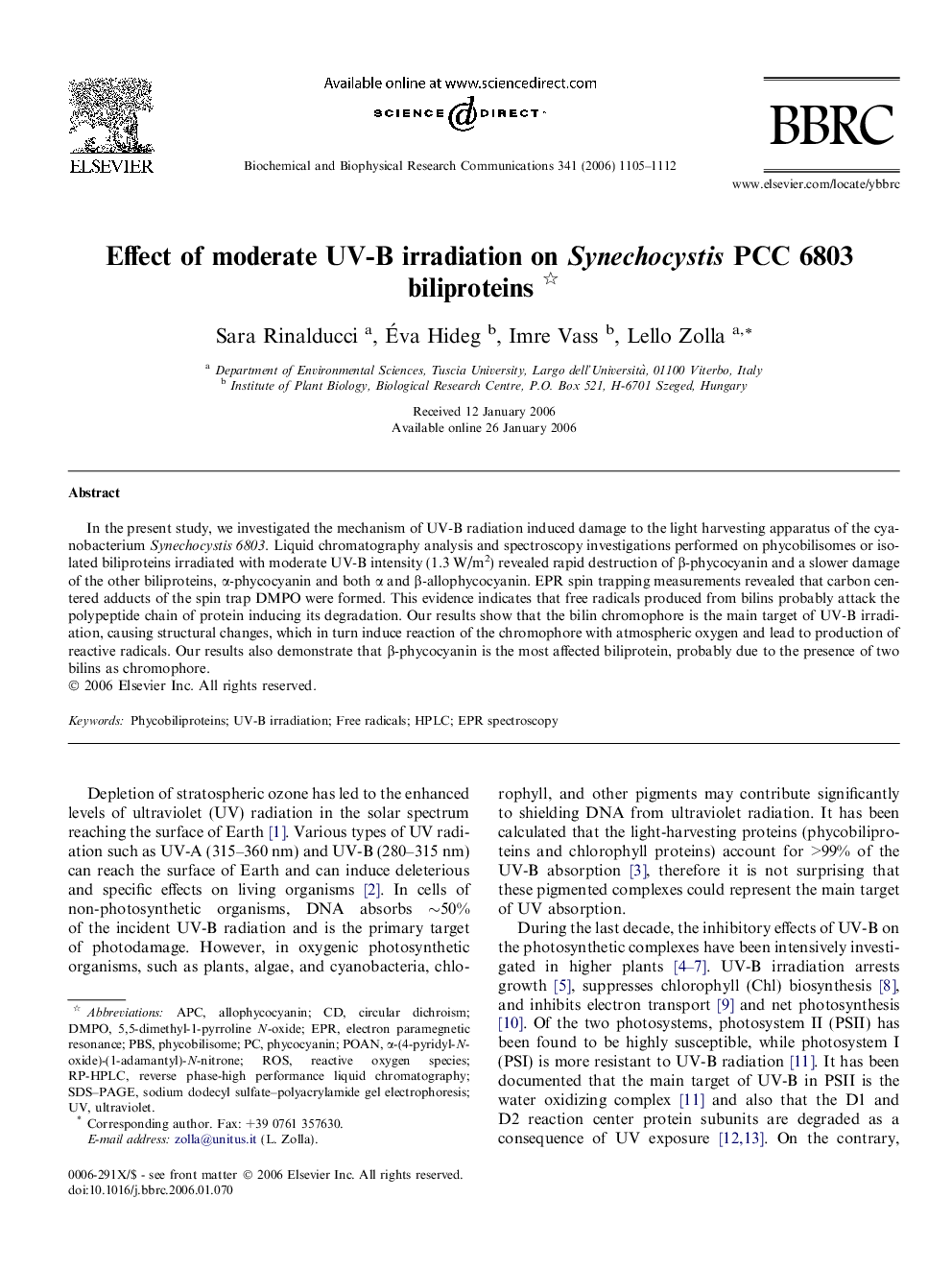| Article ID | Journal | Published Year | Pages | File Type |
|---|---|---|---|---|
| 1941248 | Biochemical and Biophysical Research Communications | 2006 | 8 Pages |
In the present study, we investigated the mechanism of UV-B radiation induced damage to the light harvesting apparatus of the cyanobacterium Synechocystis 6803. Liquid chromatography analysis and spectroscopy investigations performed on phycobilisomes or isolated biliproteins irradiated with moderate UV-B intensity (1.3 W/m2) revealed rapid destruction of β-phycocyanin and a slower damage of the other biliproteins, α-phycocyanin and both α and β-allophycocyanin. EPR spin trapping measurements revealed that carbon centered adducts of the spin trap DMPO were formed. This evidence indicates that free radicals produced from bilins probably attack the polypeptide chain of protein inducing its degradation. Our results show that the bilin chromophore is the main target of UV-B irradiation, causing structural changes, which in turn induce reaction of the chromophore with atmospheric oxygen and lead to production of reactive radicals. Our results also demonstrate that β-phycocyanin is the most affected biliprotein, probably due to the presence of two bilins as chromophore.
